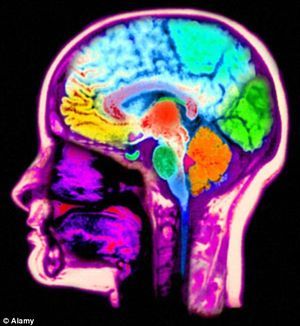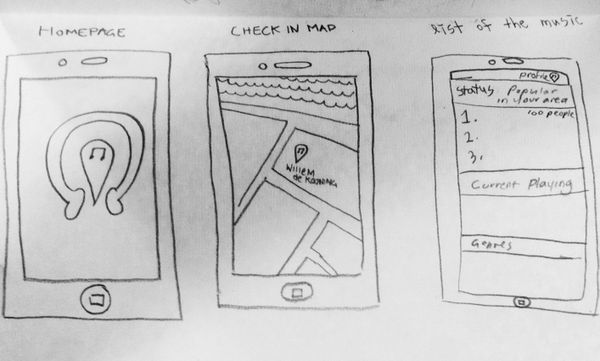Difference between revisions of "CRAFTING FUTURE MEMORIES PROJECT"
| (6 intermediate revisions by the same user not shown) | |||
| Line 1: | Line 1: | ||
'''Echoic Memory''' | '''Echoic Memory''' | ||
| + | |||
| + | In collaboration with Clair Lee | ||
| + | |||
-- | -- | ||
| + | |||
Echoic memory is one type of sensory memory process. Specifically, echoic memory is sensory memory associated with auditory information received from the environment. The term echoic stems from the word echo, which is in reference to the brief echo, or the reverberation of sound that is transmitted neurologically via this type of sensory memory. | Echoic memory is one type of sensory memory process. Specifically, echoic memory is sensory memory associated with auditory information received from the environment. The term echoic stems from the word echo, which is in reference to the brief echo, or the reverberation of sound that is transmitted neurologically via this type of sensory memory. | ||
| Line 16: | Line 20: | ||
In tests his musical memory was classified as 'normal' - even though the rest of his brain was so badly affected he could not remember the layout of his flat, the Guardian reported. | In tests his musical memory was classified as 'normal' - even though the rest of his brain was so badly affected he could not remember the layout of his flat, the Guardian reported. | ||
| − | -- BRAINSTORM -- | + | |
| + | '''--- BRAINSTORM ---''' | ||
| + | |||
An app to share the music memory linked with a particular location. The App would collect music potentially from Spotify or another online music sharing site. By using this App people will begin to appreciate the way in which the identity of a place (eg. neighbourhood) is shaped and evolves with music. | An app to share the music memory linked with a particular location. The App would collect music potentially from Spotify or another online music sharing site. By using this App people will begin to appreciate the way in which the identity of a place (eg. neighbourhood) is shaped and evolves with music. | ||
| − | [[File:AppPrototype.jpg | | + | [[File:AppPrototype.jpg | 600px | centre]] |
| + | |||
| + | |||
| + | |||
| + | '''--- PROJECT ---''' | ||
| + | |||
| + | Sound piece 1 https://soundcloud.com/user230962245/rainy | ||
| + | Sound piece 2 https://soundcloud.com/user230962245/tea | ||
| + | Sound piece 3 https://soundcloud.com/user230962245/jaws | ||
| + | |||
| + | Echoic memory plays an extremely important part in our every day lives. From the day we are born, we are exposed to symbolic sounds (e.g. from sirens and alarms to atmospheric sounds - waves, wind) that are stored with their meaning in our echoic memory - similar to that of a dictionary. These symbolic sounds are used to assist, inform and in some ways dictate parts of our daily routine. As strong as the iconic sounds in our echoic memory are - when paired with the visual and haptic parts of our memory they become stronger. Our project aims to test and question the strength of one's echoic memory sense. | ||
| + | |||
| + | We began thinking about the way individuals listen out for particular sounds. When we are familiar with a certain order of sounds it can tell us a lot about the situation we are in or experiencing. This can range from the simplicity of listening out for the sound of the buzzer at the traffic lights to more complex, individual circumstances. For example after a few weeks of living next-door to my neighbour I was able to put together a timeline of sounds that I would expect to hear when he either arrived or left his apartment. | ||
| + | |||
| + | When an individual is exposed to a number of purposely generic, artificial sounds (e.g. footsteps) that do not necessarily follow a cohesive order are they still able to pick up on the general gist of what is occurring? | ||
| + | Our interactive compilation of different sound pieces tests this theory. It invites the audience to make up their own sense of the actuality of the sound piece and in turn question how strong and how personal an individuals echoic memory is on it's own. | ||
| + | |||
| + | In order to furthur our idea - we propse to turn our sound piece narratives into a form of entertainment. For example, they could potentially be downloaded from iTunes. From an artistic perspective we propose to present our sound pieces as part of a public art, community exhibition. Each individual piece would be played in its own small room located at particular spots in Rotterdam - there would be many different ones. These rooms would link the sound piece to the location however, the use of the walls will create a distance and disconnect at the same time. | ||
Latest revision as of 13:08, 10 November 2015
Echoic Memory
In collaboration with Clair Lee
--
Echoic memory is one type of sensory memory process. Specifically, echoic memory is sensory memory associated with auditory information received from the environment. The term echoic stems from the word echo, which is in reference to the brief echo, or the reverberation of sound that is transmitted neurologically via this type of sensory memory.
Case Study: Clive Wearing
British conductor and musician Clive Wearing contracted a brain infection in 1985. He was left with a memory span of only 10 seconds. The infection - herpes encephalitis - left him unable to recognise people he had seen or remember things that had been said just moments earlier. However, despite being acknowledged by doctors as having one of the most severe cases of amnesia ever, his musical ability and much of his musical memory was intact. Now aged 73, he is still able to read music and play the piano and once even conducted his former choir again. Researchers have come to believe they are closer to understanding how musical memory is preserved in some people - even when they can remember almost nothing of their past.
Scientists are trying to understand how amnesiacs can lose all memory of their past life - and yet remember music. The answer may be that musical memories are stored in a special part of the brain. In tests his musical memory was classified as 'normal' - even though the rest of his brain was so badly affected he could not remember the layout of his flat, the Guardian reported.
--- BRAINSTORM ---
An app to share the music memory linked with a particular location. The App would collect music potentially from Spotify or another online music sharing site. By using this App people will begin to appreciate the way in which the identity of a place (eg. neighbourhood) is shaped and evolves with music.
--- PROJECT ---
Sound piece 1 https://soundcloud.com/user230962245/rainy Sound piece 2 https://soundcloud.com/user230962245/tea Sound piece 3 https://soundcloud.com/user230962245/jaws
Echoic memory plays an extremely important part in our every day lives. From the day we are born, we are exposed to symbolic sounds (e.g. from sirens and alarms to atmospheric sounds - waves, wind) that are stored with their meaning in our echoic memory - similar to that of a dictionary. These symbolic sounds are used to assist, inform and in some ways dictate parts of our daily routine. As strong as the iconic sounds in our echoic memory are - when paired with the visual and haptic parts of our memory they become stronger. Our project aims to test and question the strength of one's echoic memory sense.
We began thinking about the way individuals listen out for particular sounds. When we are familiar with a certain order of sounds it can tell us a lot about the situation we are in or experiencing. This can range from the simplicity of listening out for the sound of the buzzer at the traffic lights to more complex, individual circumstances. For example after a few weeks of living next-door to my neighbour I was able to put together a timeline of sounds that I would expect to hear when he either arrived or left his apartment.
When an individual is exposed to a number of purposely generic, artificial sounds (e.g. footsteps) that do not necessarily follow a cohesive order are they still able to pick up on the general gist of what is occurring? Our interactive compilation of different sound pieces tests this theory. It invites the audience to make up their own sense of the actuality of the sound piece and in turn question how strong and how personal an individuals echoic memory is on it's own.
In order to furthur our idea - we propse to turn our sound piece narratives into a form of entertainment. For example, they could potentially be downloaded from iTunes. From an artistic perspective we propose to present our sound pieces as part of a public art, community exhibition. Each individual piece would be played in its own small room located at particular spots in Rotterdam - there would be many different ones. These rooms would link the sound piece to the location however, the use of the walls will create a distance and disconnect at the same time.

